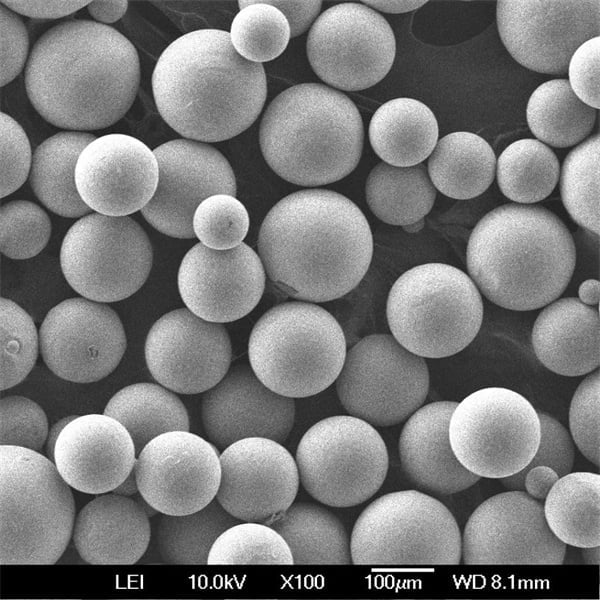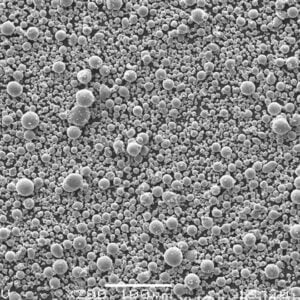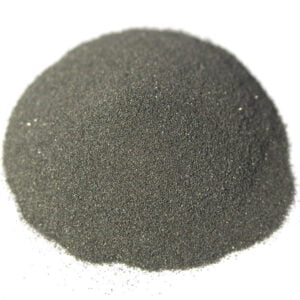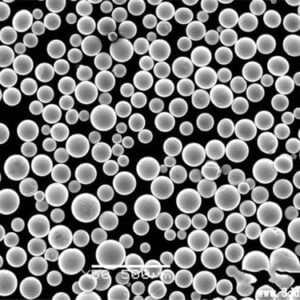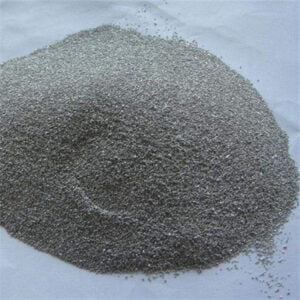Prášek ze slitiny TiNb
Prášek ze slitiny titan niob (TiNb) je pokročilý materiál s vynikajícími vlastnostmi pro použití v biomedicíně, letectví, automobilovém průmyslu a dalších náročných aplikacích. Tento článek poskytuje komplexního průvodce práškovou slitinou TiNb pokrývající složení, vlastnosti, zpracování, aplikace, specifikace, dodavatele, náklady, manipulaci a další.
Nízké MOQ
Poskytněte nízké minimální množství objednávky, abyste splnili různé potřeby.
OEM a ODM
Poskytujte přizpůsobené produkty a designové služby, které splňují jedinečné potřeby zákazníků.
Přiměřená zásoba
Zajistěte rychlé zpracování objednávek a poskytněte spolehlivé a efektivní služby.
Spokojenost zákazníků
Poskytujte vysoce kvalitní produkty s jádrem spokojenosti zákazníků.
sdílet tento produkt
Obsah
Úvod do prášku ze slitiny TiNb
Prášek ze slitiny TiNb se skládá z titanu a niob kovy. Nabízí jedinečnou kombinaci vysoké pevnosti, nízké hustoty, biokompatibility, odolnosti proti korozi, únavě a tečení při vysokých teplotách.
Slitiny TiNb jsou součástí širší třídy intermetalických materiálů titanu, které mají ve srovnání s čistým titanem lepší fyzikální, chemické a mechanické vlastnosti. Přídavek niobu jako legujícího prvku zlepšuje některé vlastnosti a umožňuje přizpůsobit slitiny TiNb pro konkrétní aplikace.
Mezi hlavní výhody prášku ze slitiny TiNb patří:
- Vysoký poměr pevnosti a hmotnosti
- Schopnost odolávat extrémním teplotám a namáhání
- Odolnost proti opotřebení, oděru a korozi v náročných podmínkách.
- Biokompatibilní a netoxické pro lékařské použití
- Lze zpracovávat do složitých tvarů pomocí aditivní výroby
- Poskytuje inženýrům flexibilitu při navrhování
Slitiny TiNb konkurují v leteckém průmyslu superslitinám na bázi niklu a kobaltu. Nabízejí také alternativu k nerezovým ocelím pro biomedicínské implantáty a zařízení. Slitiny TiNb umožňují nové aplikace a konstrukce, které nejsou možné u jiných materiálů.
Tento článek poskytuje technickou referenci zahrnující složení, vlastnosti, zpracování, aplikace, specifikace, náklady a další praktické aspekty práškové slitiny TiNb.
Složení prášku ze slitiny TiNb
Slitiny TiNb obsahují jako hlavní prvky především titan a niob. Obsah niobu se obvykle pohybuje v rozmezí 10% až 50% hmotnostních a zbytek tvoří titan.
Poměr Ti a Nb lze upravit tak, aby vznikly různé druhy slitin TiNb optimalizované pro určité vlastnosti. Mezi běžné třídy TiNb patří:
- Ti-10Nb - 10% niob, 90% titan
- Ti-35Nb - 35% niob, 65% titan
- Ti-45Nb - 45% niob, 55% titan
- Ti-50Nb - 50% niob, 50% titan
Navíc mohou být přidána malá množství dalších prvků, jako je zirkonium, tantal, molybden, chrom, aby se dále zlepšily vlastnosti. Jako nečistoty mohou být přítomny také kyslík a dusík.
Tabulka 1: Chemické složení běžných druhů slitin TiNb
| Stupeň slitiny | Obsah niobu | Obsah titanu |
|---|---|---|
| Ti-10Nb | 10% | 90% |
| Ti-35Nb | 35% | 65% |
| Ti-45Nb | 45% | 55% |
| Ti-50Nb | 50% | 50% |
Kontrola složení je rozhodující pro dosažení požadovaných vlastností konečného výrobku ze slitiny TiNb. Techniky práškové metalurgie umožňují přesné míchání kovových složek do práškové suroviny slitiny.
Vlastnosti prášku ze slitiny TiNb
Slitiny TiNb vykazují řadu užitečných fyzikálních, mechanických a chemických vlastností, díky nimž jsou vhodné pro vysoce výkonné aplikace. Mezi klíčové vlastnosti patří:
Fyzikální vlastnosti
- Hustota - 4,5 až 5,5 g/cm3, nižší než u oceli a niklových slitin.
- Bod tání - 1550 až 1750 °C v závislosti na složení
- Elektrický odpor - 0,5 až 0,6 μΩ.m, vyšší než u čistého titanu
- Tepelná vodivost - 6 až 22 W/m.K, nižší než u titanu
Mechanické vlastnosti
- Pevnost v tahu - 500 až 1100 MPa, zvyšuje se s obsahem niobu
- Mez kluzu - 300 až 900 MPa
- Prodloužení - 10% až 25%
- Tvrdost - 200 až 350 HV
- Únavová pevnost - 400 až 600 MPa
Ostatní vlastnosti
- Odolnost proti korozi - vynikající díky ochranné vrstvě oxidu.
- Odolnost proti opotřebení - lepší než titan díky tvrdosti
- Biokompatibilita - netoxický a nealergizující
Úpravou poměru Ti/Nb lze optimalizovat vlastnosti, jako je pevnost, tažnost, tvrdost a modul pružnosti, podle požadavků aplikace.
Tabulka 2: Typické vlastnosti slitiny Ti-35Nb
| Vlastnictví | Hodnota |
|---|---|
| Hustota | 5,2 g/cm3 |
| Bod tání | 1600°C |
| Pevnost v tahu | 650 MPa |
| Pevnost v tahu | 550 MPa |
| Prodloužení | 15% |
| Modul pružnosti | 60 GPa |
| Tvrdost | 250 HV |
Práškové aplikace slitiny TiNb
Díky svým jedinečným vlastnostem jsou slitiny TiNb vhodné pro náročné aplikace v různých průmyslových odvětvích:
Aerospace
- Součásti motoru - lopatky, kotouče, spojovací materiál
- Drak letadla - podvozek, křídla, trup letadla
- Hydraulické systémy - čerpadla, ventily, pohony
Automobilový průmysl
- Pružiny ventilů, ventily motoru
- Spojovací tyče, rotory turbodmychadla
- Závodní komponenty
Biomedicína
- Ortopedické implantáty - koleno, kyčelní kloub
- Zubní implantáty, korunky
- Chirurgické nástroje
- Zdravotnické prostředky
Chemický průmysl
- Výměníky tepla, reaktory
- Čerpadla, ventily, potrubí
- Zařízení odolné proti korozi
Další aplikace
- Sportovní zboží - golfové hole, rámy na kola
- Špičkové hodinky a šperky
- Elektrické kontakty a konektory
- Díly vysokoteplotních pecí
Kombinace pevnosti, teplotní odolnosti, odolnosti proti korozi a biokompatibility umožňuje slitinám TiNb nahradit těžší materiály v těchto odvětvích.
Tabulka 3: Použití slitiny TiNb podle průmyslových odvětví
| Průmysl | Aplikace |
|---|---|
| Aerospace | Součásti motoru, části draku, hydraulické systémy |
| Automobilový průmysl | Ventilové pružiny, ventily motoru, ojnice |
| Biomedicína | Implantáty, zubní, chirurgické nástroje, zařízení |
| Chemické | Výměníky tepla, reaktory, čerpadla, ventily |
| Další | Sportovní zboží, hodinky, elektrické kontakty, součásti pecí |
Zpracování prášku ze slitiny TiNb
Prášek slitiny TiNb lze vyrábět různými způsoby zpracování:
Míchání kovových prášků
- elementární titanové a niobové prášky se smíchají v požadovaném složení.
- Směs prášků se mechanicky leguje za vzniku prášku slitiny TiNb.
Atomizace plynu
- roztavená slitina TiNb je rozprašována inertním plynem na jemné kapičky.
- kapky tuhnou na kulovité částice prášku slitiny.
Proces plazmové rotující elektrody (PREP)
- TiNb elektrodová tyč je roztavena plazmovým obloukem a roztočena vysokou rychlostí.
- odstředivá síla způsobuje, že se kapky rozpadají a tuhnou na částice.
Metoda hydrid-dehydrid (HDH)
- Kovy Ti a Nb se přeměňují na křehké hydridové prášky.
- hydridové prášky se smíchají, dehydratují, rozdrtí a prosejí.
Velikost částic, morfologii, tekutost a mikrostrukturu prášku lze řídit výběrem vhodného výrobního procesu. To ovlivňuje konečné vlastnosti po konsolidaci.
Tabulka 4: Metody výroby prášku ze slitiny TiNb
| Metoda | Popis | Velikost částic | Morfologie |
|---|---|---|---|
| Mechanické legování | Míchání a mletí Ti a Nb prášků | 10 - 50 mikronů | Nepravidelné, hranaté |
| Rozprašování plynu | Atomizace roztavené slitiny inertním plynem | 15 - 150 mikronů | Sférické |
| Plazmová rotační elektroda | Odstředivá dezintegrace roztavené elektrody | 50 - 150 mikronů | Sférické |
| Proces HDH | Hydridace, dehydridace, drcení směsných prášků | 10 - 63 mikronů | Nepravidelné, hranaté |
Konsolidace prášku slitiny TiNb
Prášek slitiny TiNb lze přeměnit na součásti s plnou hustotou pomocí různých konsolidačních technik práškové metalurgie:
Izostatické lisování za tepla (HIP)
- zapouzdřený prášek je HIPován při vysoké teplotě a tlaku.
Vakuové spékání
- prášek se zhutňuje a spéká ve vakuové peci.
Spékání jiskrovou plazmou
- prášek je současně zahříván a stlačován pulzním stejnosměrným proudem.
Vstřikování kovů (MIM)
- prášek se smíchá s pojivem, vytvaruje, odvápní a slinuje.
Aditivní výroba
- fúze v práškovém loži (SLM, EBM) nebo usměrněné energetické nanášení (DED).
HIP a vakuové spékání mohou dosáhnout téměř plné hustoty při zachování jemné mikrostruktury. Aditivní výroba nabízí větší geometrickou volnost. Proces konsolidace lze optimalizovat pro dosažení požadovaných vlastností.
Tabulka 5: Techniky konsolidace práškové slitiny TiNb
| Metoda | Popis | Hustota | Mikrostruktura | Geometrie |
|---|---|---|---|---|
| HIP | Vysoký tlak, vysoká teplota | Téměř plná hustota | Pokuta | Jednoduché tvary |
| Vakuové spékání | Spékání ve vakuové peci | Téměř plná hustota | Pokuta | Jednoduché tvary |
| Spékání jiskrovou plazmou | Pulzní proud a tlak | Plná hustota | Ultrafine | Jednoduché tvary |
| Vstřikování kovů | Prášek + pojivo | Téměř plná hustota | Ultrafine | Složité tvary |
| Aditivní výroba | Fúze v práškovém loži nebo usměrněné nanášení energie | Téměř plná hustota | Hrubý | Složité tvary |
Specifikace pro prášek ze slitiny TiNb
Prášek ze slitiny TiNb je k dispozici v různých specifikacích přizpůsobených pro různé aplikace:
Složení: Třídy s obsahem niobu 10% až 50%
Velikost částic: 10 až 150 mikronů
Morfologie: Sférické, nepravidelné nebo smíšené
Způsob výroby: Rozprašovaný plyn, HDH, směsný elementární plyn
Čistota: >99,5% titan, >99,8% niob
Obsah kyslíku: <2000 ppm
Tekutost: Průtok v hale > 23 s/50 g
Zdánlivá hustota: ≥ 2,5 g/cc
Hustota kohoutku: ≥ 3,5 g/cc
Chemické složení, distribuce velikosti částic, morfologie, rychlost proudění a hustota jsou běžně specifikované vlastnosti. Pro specifické aplikace lze vyrobit slitiny a specifikace prášku na zakázku.
Tabulka 6: Typická specifikace Ti-35Nb prášku rozprašovaného plynem
| Parametr | Specifikace |
|---|---|
| Složení slitiny | Ti-35Nb |
| Velikost částic | 15 až 45 mikronů |
| Morfologie | Sférické |
| Způsob výroby | Rozprašování plynu |
| Čistota | Ti >99,5%, Nb >99,8% |
| Obsah kyslíku | <1500 ppm |
| Průtoková rychlost | >38 s/50 g |
| Zdánlivá hustota | ≥ 2,7 g/cc |
| Hustota poklepání | ≥ 4,2 g/cc |
Dodavatelé prášku ze slitiny TiNb
Mezi přední světové dodavatele prášku ze slitiny titanu a niobu patří:
- AP&C - prášky ze slitin titanu a niobu
- Atlantic Equipment Engineers - sférické a hranaté prášky
- TLS Technik - plynové atomizované slitiny TiNb
- Metal Technology - směsné elementární a předlegované prášky
- Sandvik Osprey - sférické prášky rozprašované plynem
- Carpenter Additive - prášky ze slitin na míru
Dodavatelé titanu a niobu nabízejí také slitiny TiNb. Od těchto výrobců prášků lze získat jak standardizované slitiny, tak složení na zakázku.
Tabulka 7: Dodavatelé prášku ze slitiny TiNb
| Společnost | Materiály | Výrobní metody |
|---|---|---|
| AP&C | Ti, Nb, slitiny TiNb | Rozprašování plynu |
| Atlantik vybavení inženýrů | Ti, Nb, slitiny TiNb | Rozprašování plynu, míchání |
| Technika TLS | Slitiny TiNb | Rozprašování plynu |
| Technologie kovů | Slitiny TiNb | Směsné elementární, předlegované |
| Sandvik Osprey | Slitiny TiNb | Rozprašování plynu |
| Přísada pro tesaře | Vlastní slitiny TiNb | Rozprašování plynu |
Náklady na prášek ze slitiny TiNb
Prášek ze slitiny TiNb je dražší než samotný prášek titanu nebo niobu. Cena závisí na:
- Složení - vyšší obsah Nb zvyšuje náklady
- Čistota - náklady se zvyšují při vyšší čistotě
- Velikost a distribuce částic
- Metoda výroby - prášek rozprašovaný plynem stojí více
- Objednané množství - větší objemy mají nižší náklady
Orientační ceny prášku ze slitiny TiNb v malých množstvích:
- Ti-10Nb: $100 až $300 za kg
- Ti-35Nb: $200 až $500 za kg
- Ti-50Nb: $300 až $800 za kg
Ceny se výrazně snižují při hromadných objednávkách stovek kilogramů nebo několika tun.
Tabulka 8: Orientační ceny prášků slitin TiNb
| Slitina | Ceny ($/kg) |
|---|---|
| Ti-10Nb | $100 – $300 |
| Ti-35Nb | $200 – $500 |
| Ti-50Nb | $300 – $800 |
Manipulace a skladování prášku ze slitiny TiNb
Jelikož se jedná o reaktivní kovový prášek, je při manipulaci s práškem slitiny TiNb třeba určité opatrnosti:
- Skladujte v uzavřených nádobách v suché inertní atmosféře, abyste zabránili oxidaci a kontaminaci.
- Zabraňte kontaktu s kyslíkem, vlhkostí, oleji, hořlavými materiály.
- Zabraňte hromadění jemných prášků na povrchu nebo na zařízení.
- uzemněte všechna vodivá zařízení používaná při manipulaci
- Používejte jiskruvzdorné nářadí a minimalizujte tvorbu prachu.
- Při manipulaci používejte rukavice a ochranu dýchacích cest.
- Používejte uzemněné ventilační systémy a vyhněte se oblakům prachu.
- Uchovávejte mimo dosah tepla, plamenů, jisker a jiných zdrojů vznícení.
- Dodržujte bezpečnostní list pro správné osobní ochranné prostředky a bezpečnostní opatření.
Při správném skladování v suché inertní atmosféře má prášek ze slitiny TiNb typickou trvanlivost 12 měsíců. Nesprávné skladovací podmínky mohou vést k oxidaci, ztrátě tekutosti nebo nebezpečí vznícení.
Tabulka 9: Pokyny pro manipulaci s práškem slitiny TiNb
| Parametr | Pokyny |
|---|---|
| Úložiště | Uzavřené nádoby, suchá inertní atmosféra |
| Atmosféra | Vyhněte se kyslíku, vlhkosti, olejům a hořlavinám. |
| Zařízení | Uzemněte všechna vodivá zařízení |
| Nástroje | Používejte nejiskřící nástroje |
| Ventilace | Uzemněný ventilační systém |
| PPE | Rukavice, ochrana dýchacích cest |
| Bezpečnostní opatření | Vyhýbejte se teplu, plamenům a jiskrám. |
| Doba skladování | 12 měsíců v inertní atmosféře |
Bezpečnostní list pro prášek ze slitiny TiNb
Stejně jako u jiných reaktivních kovových prášků platí i pro slitinu TiNb některá důležitá bezpečnostní opatření:
- Používejte osobní ochranné prostředky - rukavice, ochranu očí, masku/respirátor.
- Vyvarujte se vdechnutí prášků - používejte ochranu dýchacích cest.
- Vyhněte se kontaktu s kůží a očima
- Po manipulaci s práškem se důkladně umyjte
- Vyhněte se zdrojům vznícení, prášky mohou být hořlavé.
- Používejte správné uzemnění a větrání
- Inertní skladovací atmosféra zabraňující oxidaci
- Zabraňte rozlití a hromadění prachu na povrchu.
- Dodržujte pokyny na bezpečnostních listech a výstražných štítcích
První pomoc:
- Inhalace: Přesuňte se na čerstvý vzduch. V případě potřeby vyhledejte lékařskou pomoc.
- Styk s kůží: Umyjte vodou a mýdlem. Pokud podráždění přetrvává, vyhledejte pomoc.
- Oční kontakt: Vyplachujte oči vodou po dobu 15 minut. Vyhledejte lékařskou pomoc.
- Požití: Vypijte vodu. V případě potíží vyhledejte lékařskou pomoc.
Před manipulací a zpracováním prášku slitiny TiNb si vždy přečtěte bezpečnostní listy od dodavatele, kde jsou uvedeny úplné informace o bezpečnosti a ochraně zdraví.
Tabulka 10: Klíčová bezpečnostní opatření pro prášek slitiny TiNb
| Bezpečnostní položka | Bezpečnostní opatření |
|---|---|
| PPE | Rukavice, ochranné brýle, maska N95 |
| Inhalace | Používejte ochranu dýchacích cest |
| Styk s kůží | Omyjte postižené místo vodou a mýdlem |
| Oční kontakt | Vyplachujte oči vodou po dobu 15 minut |
| Požití | Pijte vodu. V případě potřeby vyhledejte lékařskou pomoc. |
| Ventilace | Používání uzemněných odsavačů par |
| Uzemnění | Uzemněte všechna zařízení při manipulaci |
| Zapalování | Vyhýbejte se jiskrám, plamenům a zdrojům tepla. |
| Úložiště | Inertní prostředí mimo hořlavé materiály |
Kontrola kvality prášku ze slitiny TiNb
Aby se zajistilo, že prášek slitiny TiNb splňuje specifikace, provádějí se různé kontroly kvality:
- Chemická analýza - ICP, GDMS nebo LECO analýza k ověření složení a čistoty
- Analýza velikosti částic - laserová difrakce nebo sítová analýza pro rozdělení podle velikosti
- Morfologie - Zobrazování SEM pro kontrolu tvaru a topologie povrchu částic
- Průtoková rychlost - Zkouška průtokoměrem Hall pro zjištění tekutosti prášku
- Hustota - měření zdánlivé hustoty a hustoty odbočky
- Kyslík/dusík - analýza fúze inertního plynu na intersticiální nečistoty
- Identifikace fáze - Analýza XRD ke stanovení přítomných fází
Vlastnosti prášku jsou testovány na každé šarži podle norem kvality, jako jsou ASTM B939, ASTM F3049, EN 10204 3.1. Prášek lze mezi jednotlivými šaržemi míchat, aby se dosáhlo jednotnosti.
Tabulka 11: Zkušební metody pro prášek slitiny TiNb
| Test | Metoda | Standard |
|---|---|---|
| Složení | ICP, GDMS, LECO | ASTM E1479, ASTM E2330 |
| Distribuce velikosti částic | Laserová difrakce, prosévání | ASTM B822 |
| Morfologie | Zobrazování pomocí SEM | ASTM B822 |
| Průtoková rychlost | Hallův průtokoměr | ASTM B213 |
| Hustota | Volumetr Scott | ASTM B212 |
| Kyslík/dusík | Fúze inertních plynů | ASTM E1019 |
| Fázová analýza | Difrakce rentgenového záření | ASTM E1876 |
Lékařské aplikace slitiny TiNb
Díky své biokompatibilitě, vysoké pevnosti a nízkému modulu jsou slitiny TiNb široce používány pro lékařské implantáty a přístroje:
Ortopedické implantáty
- Náhrady kolenních a kyčelních kloubů
- Kostní destičky, šrouby
- Zařízení pro fixaci páteře
- Zubní implantáty a můstky
Slitiny TiNb jako Ti-35Nb a Ti-45Nb odpovídají modulu pružnosti lidské kosti a zároveň poskytují vysokou únavovou pevnost. Tím se snižuje stínění napětí ve srovnání s tužšími slitinami titanu.
Kardiovaskulární zařízení
- Stenty
- Pouzdra kardiostimulátorů
- Vodicí dráty
- Chirurgické nástroje
Odolnost proti korozi, netoxičnost a nemagnetismus slitin TiNb je předurčují k použití v zařízeních, která přicházejí do styku s krví a tkáněmi.
Třídy slitin TiNb pro lékařské použití
- Ti-10Nb až Ti-50Nb
- Ti-Nb-Zr, Ti-Nb-Ta pro upravené vlastnosti
- Normy ISO 5832-11 a ASTM F2066
Běžně se používají nižší moduly Ti-35Nb a Ti-45Nb. Vyšší Nb zvyšuje pevnost, ale zvyšuje modul. Malé přídavky Zr/Ta dále upravují vlastnosti.
Výhody slitin TiNb pro biomedicínské použití
- Vynikající biokompatibilita a osteointegrace
- Vysoká pevnost a odolnost proti únavě
- Nízký modul v blízkosti kosti
- Netoxický, nealergizující
- Odolnost proti korozi
- Nemagnetické
Slitiny TiNb poskytují nejlepší kombinaci pevnosti, biokompatibility, odolnosti proti korozi a modulu pružnosti pro implantáty.
Výzvy týkající se lékařských komponentů ze slitiny TiNb
- Obtížné obrábění a výroba
- Dražší než slitina Ti-6Al-4V
- Vyžaduje přísnou kontrolu kvality a testování
- Dlouhodobější klinické údaje se stále vyvíjejí
Vzhledem k tomu, že se jedná o relativně nový materiál pro lékařské použití, může být výroba a licencování TiNb komponent složitější. Jejich výhody však převažují nad krátkodobými problémy.
Použití slitiny TiNb v automobilovém průmyslu
Vysoká pevnost, teplotní odolnost a únavová životnost slitin TiNb je činí atraktivními pro automobilové díly:
Pružiny ventilů
- Vyšší pevnost umožňuje nižší hmotnost pružiny
- Snižuje plování ventilů při vysokých otáčkách
- Umožňuje vyšší výkon
Ventily motoru
- Odolává vysokým teplotám výfukových plynů
- Odolnost proti opotřebení a deformaci
- Lehká váha
Spojovací tyče
- Vysoký poměr pevnosti a hmotnosti
- Snížení vratné hmotnosti
- Umožňuje vyšší otáčky a výkon
Rotory turbodmychadla
- Zachovává pevnost při vysokých teplotách
- Odolnost proti deformaci tečením
- Odolnost proti tepelným šokům
- Nízká hustota
Závodní komponenty
- Lehké odpružení, podvozkové díly
- Vynikající únavová životnost
Snížená hmotnost a setrvačnost v kombinaci s teplotní a únavovou odolností vedou k vyššímu výkonu a účinnosti motoru.
Výzvy slitin TiNb pro automobilový průmysl
- Vysoká cena ve srovnání s ocelovými slitinami
- Obtíže při zpracování práškovou metalurgií
- Omezené zkušenosti s dodavateli a výrobou
- Nejistý poměr nákladů a přínosů
Výhody mohou zpočátku ospravedlnit vyšší ceny pro špičková vozidla a motoristické sporty. Širší rozšíření závisí na tom, zda výrobci TiNb prášku sníží náklady.
Letecké aplikace slitin TiNb
Slitiny TiNb konkurují niklovým superslitinám pro aplikace v leteckých motorech a dracích letadel, kde je potřeba pevnost při nízkých teplotách:
Součásti motoru
- Lopatky, disky a pláště turbín
- Lopatky kompresoru
- Hřídele, spojovací materiál
- Obraceče tahu
Konstrukční díly
- Podvozek
- Křídla, žebra, podélné části
- Rámy trupu
- Hydraulické trubky
Výhody
- 30-50% nižší hustota než u superslitin Ni
- Úspora hmotnosti
- Podobná pevnost a odolnost proti tečení
- Odolává vysokému namáhání a teplotám
Výzvy
- V současné době vyšší náklady než u slitin titanu
- Obtíže při zpracování ve srovnání s tepanými slitinami
- Omezené zkušenosti s výrobou a dostupnost
- Údaje o nemovitostech se stále vyvíjejí
Letecký průmysl je konzervativní, takže před zavedením nových slitin, jako je TiNb, je třeba provést rozsáhlé testování a kvalifikační programy, aby se prokázala životaschopnost a vytvořily se dodavatelské řetězce.
Další aplikace slitin TiNb
Kromě použití ve zdravotnictví, automobilovém a leteckém průmyslu jsou slitiny TiNb vhodné také pro:
- Lodní doprava - lodní šrouby, hřídele čerpadel, armatury
- Chemické - výměníky tepla, kondenzátory, potrubí
- Sportovní zboží - Golfové hole, rámy na kola, rakety
- Výroba energie - Komponenty parních a plynových turbín
- Elektronika - Rozprašovací terče, kondenzátory
- Šperky - hodinky, prsteny, piercingy
- Ropa a plyn - Vrtné nářadí, ventily, čerpadla
Odolnost proti korozi, biokompatibilita a elektrické vlastnosti rozšiřují možnosti využití slitin TiNb v různých průmyslových odvětvích.
Pokračující výzkum a vývoj odhalí nové aplikace s tím, jak budou narůstat výrobní zkušenosti s práškovou slitinou TiNb. Jejich jedinečná rovnováha vlastností umožní konstrukce, které nejsou proveditelné s jinými materiály.
Budoucí výhled pro slitiny TiNb
- Rozšiřující se lékařské využití v důsledku stárnutí populace a potřeby lepších implantátů
- Zrychlující se zavádění v letectví a kosmonautice za účelem snížení hmotnosti
- Využití v automobilovém průmyslu se zvyšuje kvůli potřebám vysokého výkonu
- Zájem o hardware pro hlubokomořský průzkum ropovodů a zemního plynu roste
- Výroba pomocí práškové metalurgie a technik AM se zlepšuje
- Vyvíjení nových tříd pro přizpůsobení vlastností
- Dodavatelský řetězec se rozšiřuje, protože výrobci zvyšují kapacitu slitiny TiNb
- Náklady klesají s vyšším objemem výroby
- Širší povědomí a přijetí napříč odvětvími
Budoucnost slitin TiNb se zdá být jasná, protože se stanou novým pokročilým materiálem, který vytlačí tradiční slitiny v nejnáročnějších aplikacích. Jejich úspěch závisí na pokračujících investicích do zlepšení cenové dostupnosti.
Klíčové poznatky o prášku ze slitiny TiNb
- Slitiny TiNb mají ve srovnání s titanem lepší mechanické vlastnosti.
- Pevnější, tužší a tvrdší než čistý titan.
- Nižší hustota a vyšší pevnost než u slitin niklu a oceli.
- Vynikající výkon při vysokých teplotách
- Odolnost proti tečení, únavě a korozi v náročných podmínkách
- Vynikající biokompatibilita pro lékařské implantáty
- Nastavitelné vlastnosti změnou poměru Ti/Nb
- Vyrábí se směsnou elementární nebo předlegovanou práškovou metalurgií.
- Prášek lze konsolidovat pomocí AM, HIP, MIM nebo spékáním.
- Přední aplikace v leteckém, automobilovém a biomedicínském průmyslu.
- Pozitivní vyhlídky do budoucna díky odlehčování a potřebám vysokého výkonu
Slitiny TiNb představují pokročilý průlom v oblasti kovových materiálů, který umožňují techniky práškové metalurgie. S klesajícími výrobními náklady jsou připraveny narušit řadu průmyslových odvětví vyžadujících lehké, pevné a teplotně odolné slitiny.
Často kladené otázky týkající se prášku ze slitiny TiNb
Zde jsou odpovědi na některé časté otázky týkající se práškové slitiny TiNb:
Otázka: Jaké jsou hlavní výhody slitin TiNb oproti slitinám titanu?
Slitiny TiNb mají ve srovnání se slitinami titanu vyšší pevnost, tuhost, tvrdost, odolnost proti opotřebení a odolnost vůči vysokým teplotám. Mají také nižší hustotu než slitiny niklu a oceli.
Otázka: V jakých průmyslových odvětvích se používají slitiny TiNb?
Hlavní aplikace jsou v leteckém, automobilovém, biomedicínském, chemickém, námořním a energetickém průmyslu. Použití se rozšiřuje s rostoucí výrobou práškové metalurgie.
Otázka: Jaké je typické cenové rozpětí prášku ze slitiny TiNb?
Ceny se pohybují od přibližně $100/kg pro Ti-10Nb do $300-800/kg pro Ti-50Nb v závislosti na složení, kvalitě a objemu objednávky. S rozšiřováním výroby ceny klesají.
Otázka: Jaká velikost částic je běžná pro prášek ze slitiny TiNb?
Typická je velikost částic od 10 do 150 mikronů. Pro aditivní výrobu se upřednostňují jemné prášky o velikosti 10-45 mikronů. Hrubší prášky do 150 mikronů se používají pro lisovací a spékací aplikace.
Otázka: Jak se vyrábějí prášky ze slitiny TiNb?
Mezi hlavní výrobní metody patří plynová atomizace, plazmová sféroidizace, hydrid-dehydridový proces a směsný elementární proces. Prášky atomizované plynem a sféroidizované plazmou mají sférickou morfologii, která je pro AM výhodná.
Otázka: Jaké normy se vztahují na slitiny TiNb pro lékařské použití?
Normy ISO 5832-11 a ASTM F2066 se týkají složení, mechanických vlastností, zkoušek kontroly kvality a požadavků na zpracování slitin TiNb pro chirurgické implantáty.
Otázka: Lze 3D tisknout slitiny TiNb?
Ano, prášky ze slitiny TiNb jsou kompatibilní s procesy 3D tisku pomocí laserové fúze v práškovém loži, fúze v práškovém loži s elektronovým paprskem a usměrněného energetického nanášení. Pro dosažení dobré hustoty a vlastností je třeba optimalizovat parametry.
Otázka: Existují zdravotní rizika spojená s TiNb prášky?
Stejně jako u jiných kovových prášků jsou při manipulaci s TiNb prášky nutná určitá bezpečnostní opatření, aby se minimalizovalo riziko výbuchu prachu a expozice vdechnutím. Samotná slitina je však vysoce biokompatibilní.
Otázka: Jaké jsou vyhlídky na přijetí slitin TiNb?
Budoucnost vypadá slibně, protože se rozšiřuje používání slitin TiNb, což je dáno potřebou lehkých, pevných a tepelně odolných materiálů. S klesajícími výrobními náklady na práškovou metalurgii se bude jejich zavádění zrychlovat.
Zahrnuje klíčové otázky inženýrů týkající se specifikace, zpracování, aplikací a vyhlídek práškové slitiny TiNb jako nově vznikajícího pokročilého materiálu. Obraťte se na nás v případě jakýchkoli dalších konkrétních dotazů.
Získejte nejnovější cenu
O Met3DP
kategorie produktů
ŽHAVÁ SLEVA
KONTAKTUJTE NÁS
Nějaké otázky? Pošlete nám zprávu hned teď! Po obdržení vaší zprávy obsloužíme vaši žádost s celým týmem.

Kovové prášky pro 3D tisk a aditivní výrobu
SPOLEČNOST
PRODUKT
kontaktní informace
- Město Qingdao, Shandong, Čína
- [email protected]
- [email protected]
- +86 19116340731






